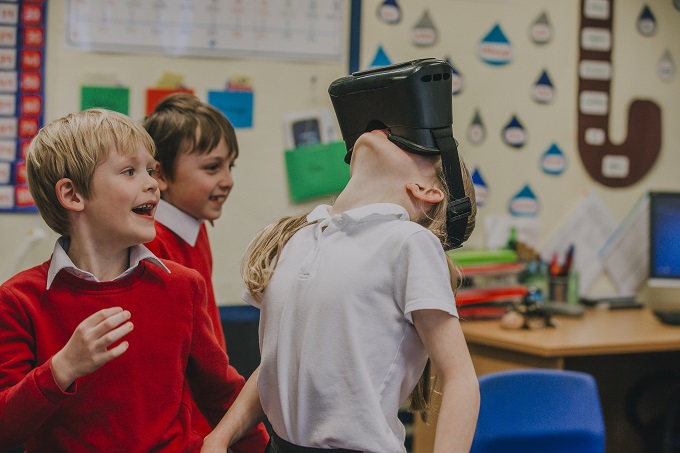Some students need additional support – is flexibility the solution?

The comings and goings in a classroom where children with different abilities are encouraged to explore various activities, areas and learning mediums works well for many students but for others is it can be a chaotic sensory overload that fails to meet their specific needs.
In theory, the push towards ‘Flexible Learning Spaces’ should support a diverse range of students as the principles are strongly based on inclusivity.
Yet, how many stories have we read online so far this year about children with special needs being excluded from schools? In April, NZ mum and business consultant Erika Harvey penned an open letter to the Prime Minister on her blog (piperslove.com) urging the government to increase funding for special needs students. Referring to the financial deficit of her daughter’s Decile 2 school, which she explained has 24 ORS-funded special education students, she wrote: “The school’s success in assisting their ORS funded students, (to which they refer to as their ‘treasures’ because they have added so much joy to their school) is actually sinking them! With their deficit this year totalling $-118,482.26.
“They follow their legal obligation of providing an inclusive education to all children, never closing their doors to a child with special needs, while other schools find ways to manage these high need, ‘expensive’ children by expelling them for disruptive behaviour, forcing many parents out of work and in to home-schooling.”
Elsewhere, President of the NZ School Trustees Association Lorraine Kerr told Stuff.co.nz in June that she has noticed more students are attending primary and intermediate schools with significant behavioural issues related to conditions like foetal alcohol syndrome, which has had the ripple effect of school boards submitting more queries about student suspensions and exclusions, unable to provide the correct support required by these students.
“It’s worrying that boards and schools are finding themselves in this position,” Ms Kerr told the website.
Perhaps there cannot be a one-size-fits-all approach to education; even an approach like FLE that aims to be child-led. The type of learning support that a student with ADHD might need can differ substantially from the support required by a student with different sensory issues, or a physical disability.
Why aren’t we getting it right?
The vision of the New Zealand Curriculum is for classrooms to be an inclusive space for students who require additional physical or learning support. The Ministry of Education suggests, using the principles of Universal Design (UDL) for best practice; a research-based framework to help “teachers plan learning to meet the diverse and variable needs of all students”.
Evidence shows that classroom design does impact student outcomes and that physical design and teaching practise need to be closely aligned. Taking a FLE approach means that teaching tools to assist the learning of students with special needs must be a priority. The terrific news is that there are a plethora of products, technologies, strategies and programs that teachers can put in place to help young learners – and the flexibility of a modern learning environment may even allow these to blend seamlessly into the fabric of the school.
But, if the teaching tools are available – why do we keep seeing stories about students slipping through the cracks? One reason cited often is funding.
Funding: How? Where? and why aren’t more students receiving it?
A substantial 3057 of the 10,000 applications for Ongoing Resourcing Scheme (ORS) funding were turned down by the Ministry of Education between July 2011 and September 2017, according to Stuff.co.nz. The ORS scheme has nine criteria that must be met in order for funding to be granted, and these covers five “need areas”: learning, hearing, vision, physical, and language use/social communication. According to the government, “to meet ORS criteria, students must have: ongoing extreme or severe difficulty with any of the need areas, or moderate to high difficulty with learning, combined with very high or high needs in any two need areas.”
But is it all about funding?
Talking about his own experiences of Autism spectrum disorder (ASD) and what worked well for him at school, Matt Frost a 32-year-old policy analyst chatted with Chrissie Butler on YouTube, both members of Te Toi Tupu’s reference group for inclusive practices. Matt said: “I was fortunate to have teachers who allowed me to develop and grow as I needed to develop and grow, and really allowed me to engage with what I was interested in and they did that in a really natural way.” Matt went on to describe an example of how his teachers recognised his love for reading non-fiction books and would source suitable books above his reading level for him to enjoy.
The lesson here is that Matt remembers a very simple intervention from a teacher that recognised his uniqueness and his specific educational needs.
Providing the right support (early) can significantly change learning outcomes and there are often simple solutions to help all individuals who struggle with communicating, interacting, and taking in information, visual and spatial skills, non-verbal problem solving, and visual and auditory memory.
For every student who learns in a unique way, there may be a simple human intervention that can help. Alternatively, simple adjustments to technology or equipment can be sourced. Technology provides solutions and a plethora of alternate ways to access and interact with information, but some students may not be able to use a standard keyboard in the usual way so text to speech, eye tracking, head tracking, word prediction, or alternative keyboards or mice may be required.
There are expert suppliers who will help you find a solution from software, computers, touch screens and hand-held devices, to toys and sensory equipment that provide auditory, tactile and visual stimulation. For dyslexia, simple coloured overlays are a proven, research-based solution to their visual stress problems or even pens that scan a tricky printed word and read it aloud.
Too often, making a positive difference to a student’s learning experience requires a long and exhausting battle for extra funding and learning/behavioural support but effective human interaction, building positive relationships and sometimes finding solutions from trial and error is the first step to success.
Remember, it is sometimes the simplest intervention that opens the world to a student.










It is particularly distressing to see the continual lack of depth and breath for those students with special needs whom can not access full time ‘inclusive’ education. Talk of technological interventions, modern learning environments, reading books of high interest – simple solutions is quoted. However, the students I teach are not interested in reading, cannot talk, have such poor muscle control they cannot move a mouse, use a finger to explore iPads. They have huge sensory issues – do not like crowds, loud noises, and their attention spans range from a few seconds to a few minutes. They need physical outlets, toileting, activities that are highly hands on. They require a Teacher Aide to support engagement, otherwise they sit staring into space. They cannot work independently – their learning is toward developing independence, turn taking, sharing and that which is based on functional life skills. So where in the MOE’s documentation are these students shown the respect of their different needs being catered for. What is the purpose of trying to fit these students into a box that has absolutely no purpose for their future existence? Why is their such a drive to include these very high, high and complex students into inclusive settings that realistically are not a fit for their particular learning developmental and social needs. Let them be inclusive as suits their diverse needs, not the needs of people who do not know what it is like to be in their shoes. The sheer distress caused by trying to force them into a square is played out both in the school but mostly at home.
It is particularly distressing to see the continual lack of depth and breath for those students with special needs whom can not access full time ‘inclusive’ education. Talk of technological interventions, modern learning environments, reading books of high interest – simple solutions is quoted. However, the students I teach are not interested in reading, cannot talk, have such poor muscle control they cannot move a mouse, use a finger to explore iPads. They have huge sensory issues – do not like crowds, loud noises, and their attention spans range from a few seconds to a few minutes. They need physical outlets, toileting, activities that are highly hands on. They require a Teacher Aide to support engagement, otherwise they sit staring into space. They cannot work independently – their learning is toward developing independence, turn taking, sharing and that which is based on functional life skills. So where in the MOE’s documentation are these students shown the respect of their different needs being catered for. What is the purpose of trying to fit these students into a box that has absolutely no purpose for their future existence? Why is their such a drive to include these very high, high and complex students into inclusive settings that realistically are not a fit for their particular learning developmental and social needs. Let them be inclusive as suits their diverse needs, not the needs of people who do not know what it is like to be in their shoes.